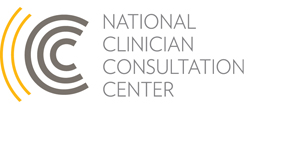Case of the Month: HIV Testing in Newborns
Case Summary
A neonatologist called about a very low birth weight (1134g) infant born at 37.5 weeks gestation to a 27-year-old woman who had been diagnosed with HIV at week 13 of her pregnancy. The mother had been started on co-formulated zidovudine/lamivudine (Combivir) and boosted lopinavir (Kaletra), and had achieved viral suppression at week 33 of the pregnancy. Intravenous zidovudine (Retrovir) was administered intrapartum.
The clinician asked the CCC for additional information on newborn testing. Specifically, he asked what the schedule was for HIV polymerase chain reaction (PCR) and CBC testing.
CCC Consultant Response
Laboratory evaluation of HIV-exposed infants is discussed in both the DHHS Perinatal and DHHS Pediatric HIV Guidelines. HIV DNA or RNA PCR testing is recommended at birth, particularly in high risk infants, to rule out intrauterine perinatal infection (some experts recommend birth testing in all infants). If the first newborn HIV PCR is positive, this should be verified with a second sample. If the infant’s status is indeed confirmed to be HIV positive, ARV prophylaxis should be discontinued, and the infant should be promptly referred to a pediatric HIV specialist for evaluation and treatment of HIV infection with recommended combination antiretroviral therapy.
• Virologic tests are required to rule out HIV infection in infants born to women with HIV. HIV antibody testing is not useful in this setting, as maternal antibodies are transferred across the placenta to the infant and will result in positive antibody results. These antibodies generally persist in a perinatally-exposed infant until up to 18 months of age.
• HIV infection can be “presumptively” excluded in non-breastfed infants with two negative virologic tests drawn at ≥2 weeks of age and ≥4 weeks of age.
• HIV infection is “definitively” ruled out in non-breastfed infants with two negative DNA or RNA tests drawn at ≥1 month of age and ≥4 months of age.
o The DHHS Pediatric Guidelines now clarify that infant testing at 1-2 months of age may be preferably scheduled 2-4 weeks after cessation of infant ARV prophylaxis. In such situations, the test would be obtained at 6 weeks (in the case of 4 weeks of neonatal ARV prophylaxis) or at 8 weeks (in the case of 6 weeks of ARV prophylaxis).
• A CBC with differential should be performed on all HIV-exposed newborns at baseline.
• For infants who are on zidovudine-only prophylaxis, some experts recheck hemoglobin and neutrophil counts routinely after 4 weeks, while others recheck only if symptoms are present.
• For infants exposed to combination ARV drug regimens in utero or during the neonatal period, some experts recommend more intensive monitoring of hematologic and serum chemistry and liver function assays.
• Decisions about timing of subsequent monitoring of hematologic parameters depends on baseline hematologic values, gestational age at birth, clinical condition of the infant, receipt of other ARVs and concomitant medications, and maternal antepartum ARV therapy.
Because CCC consultations are based on information provided by the caller or clinician accessing the online consultation center, without the benefit of a direct evaluation or examination of the patient, consultations are intended to be used as a guide. They do not constitute medical advice and are not to serve as a substitute for medical judgment. This Case of the Month includes consultation based on the most up-to-date evidence at the time of its publication. To learn about current recommendations, please call one of our clinical consultation lines.
 University of California, San Francisco |
University of California, San Francisco |
